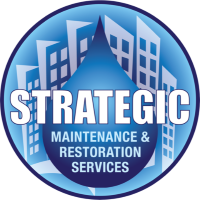Frequently Asked Questions
The only 5 ways approved by the IICRC are hot water extraction, use of dry compounds, bonnet, use of dry foam, and the use of shampoo. Depending on the manufacturers, either one could be selected as being the best for your product. However, combining these methods offers the most effective solution. Read more about The Best Carpet Cleaning Method
There is no such thing as “best product” when it comes to spot cleaning. Each type of stain requires a different product. There is, however, a list of products that are most effective against different types of stains.
Proper walk-off mats, frequency, and proper training and funding.
Yes. All of our products are carefully inspected by various organizations and regulatory bodies. We exclusively use eco-friendly, certified products.
An expert technician who understands all of the aspects of commercial textile cleaning and maintenance. A specialist in everything from construction and benefits to cleaning and restoration of commercial textiles.
A standard warranty protects against carpet defects and is usually issued for 5-10 years. Some manufacturers include in-crush resistance and matting clauses.
The word “wear” is defined as a 10% loss (or higher) of fiber. Most warranty claims relate to customer’s expectations and/or poor maintenance procedures. It is a good idea to document installation or construction defects within the first year. Send your complaint in writing to the retailer.
According to the definition issued by the IICRC, cleaning refers to the process of removing contaminants, debris, and other pollutants from a carpet or surface, with the sole purpose of reducing environmental and health damage that might be caused by the said contaminants.
It depends on your particular needs. These questions should serve as a guide:
- How long are you staying in your facility?
- What type of product are you purchasing?
- What does the manufacturer’s warranty cover?
- How much foot traffic do you have, and how much exposure do your interiors receive?
Some warranties include using designated or approved products and service providers. Many manufacturers provide 2-10 year performance guarantees and generally cover replacement of the product if found to be defective. Re-installation costs and furniture moving expenses, however, are usually not covered.
Read the warranty carefully at the time of purchase and determine if it provides sufficient coverage for your facility.
Strategic Restoration Services, of course! That said, make sure the person or company you hire are IICRC-certified professionals.
Contrary to popular belief, sealing solutions do not prevent your carpets or surfaces from getting dirty again. However, these substances do provide an extra layer of protection for your fibers and surfaces.
Spots are usually made by soluble material spills and can be easily cleaned through conventional methods. Stains are substances that might consist of dyes or other coloring compounds, thus making its removal harder.
It depends on the process and the types of solutions used. If hot water extraction is used with a solution that leaves a dry, brittle residue, the answer is – no. The solution is rinsed out completely, making it easy to vacuum the residue. A dry, brittle residue will not continue to attract dirt.
However, if the carpet was shampooed with a soapy solution and leaves a sticky residue, the answer is – yes. The sticky residue clings to the fibers and continues to attract dirt, soiling the carpet again.
Yes. The sealer that is used to cover the surface of asphalt can damage your fibers while also damaging the color of your carpet. It is recommended that sealing of asphalt not be done during the summer months.
Each manufacturer provides a series of recommendations for their carpets. In most cases, these recommendations are based on the main fiber that has been used in the making of the carpet.
Contact Us Today for a Free Quote
Call 407-855-8584, or Submit A Quote Request Online.
